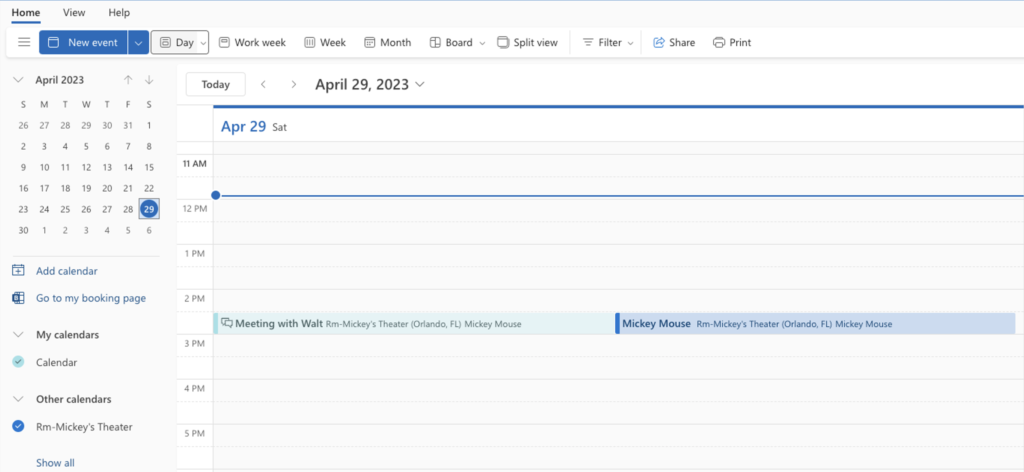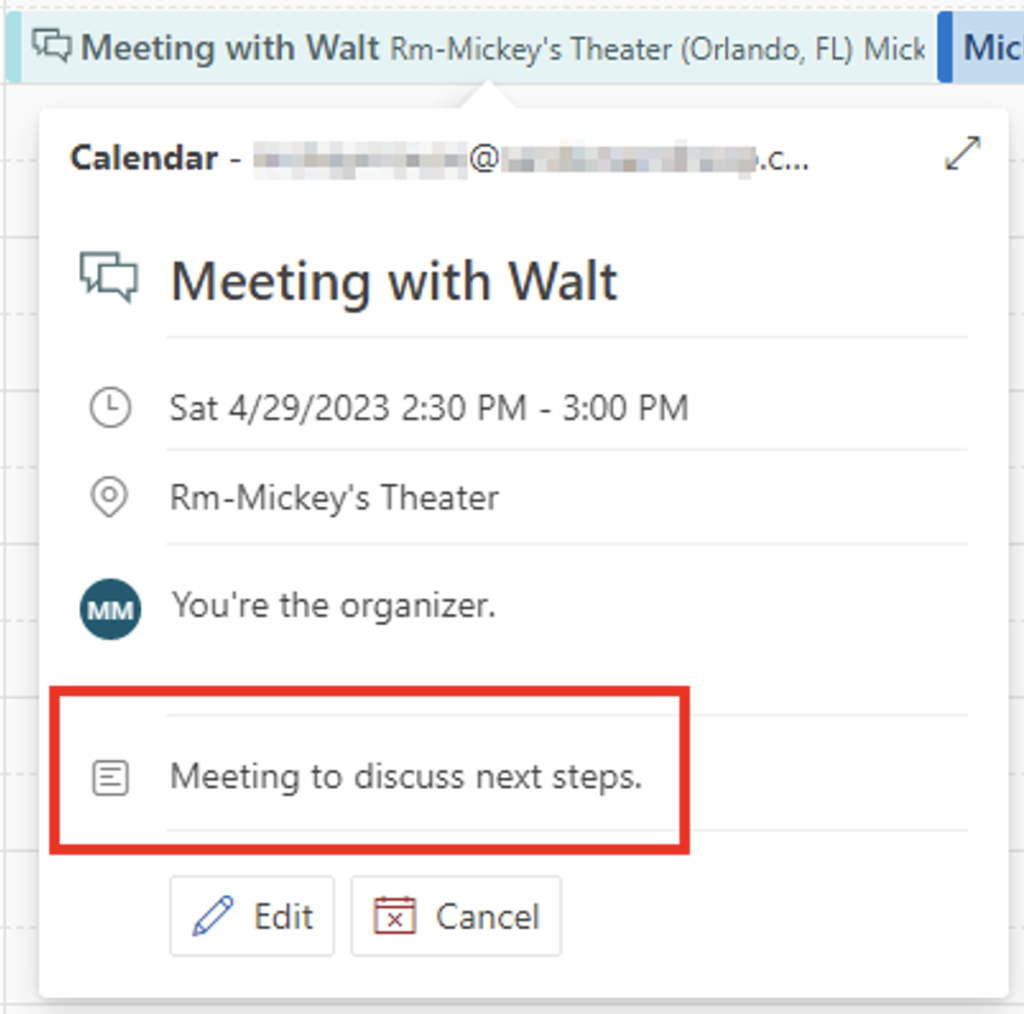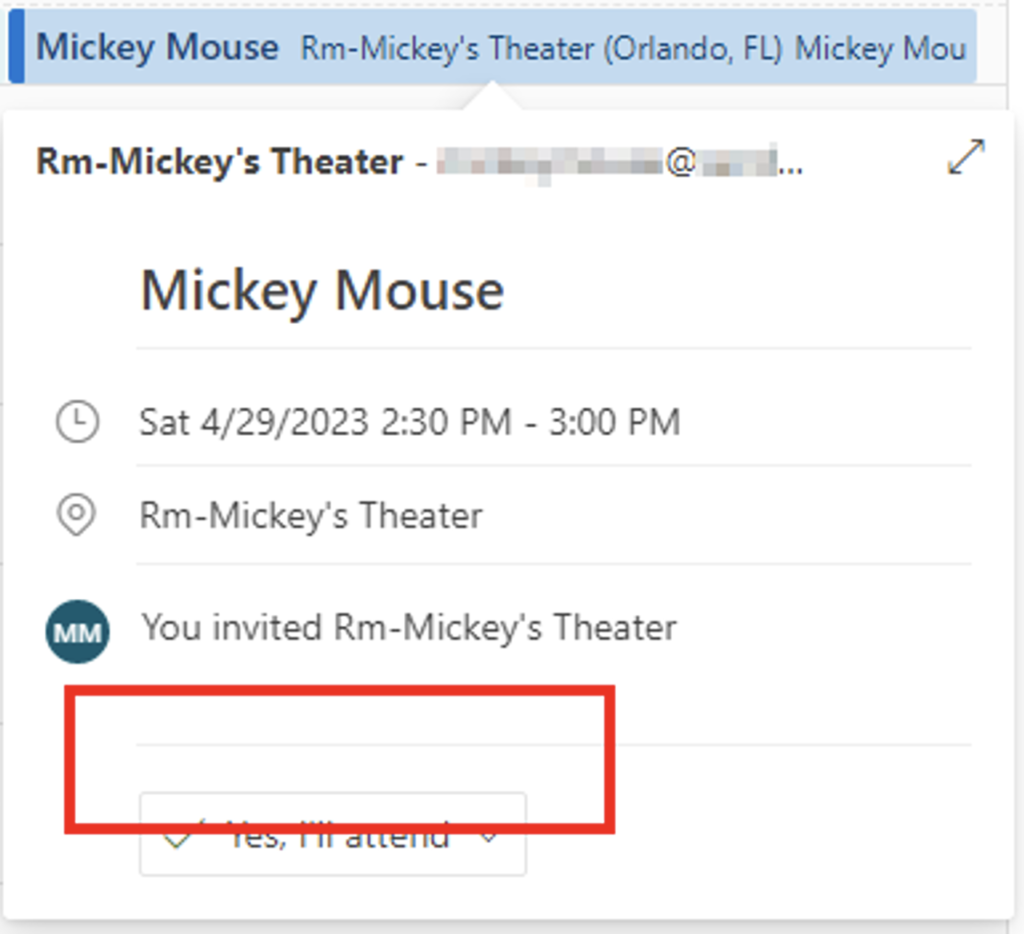There are several advanced options only available in PowerShell for Exchange Online for setting up rooms. These include giving some users more rights to the room calendars, hiding or showing certain meeting details, and managing the rooms with groups.
This post will look at each of these Microsoft Exchange options to show you some advanced capabilities not found in the Exchange admin portal.
To better utilize this blogpost, you will need the Exchange PowerShell module installed on your computer.
Default Permissions in Microsoft Exchange Online
By default, all users in an organization have AvailabiltyOnly access to all rooms. This gives users free/busy access to see if a room is available when booking it.
You can see this by running the following command and looking at the Default user:
- Get-MailboxFolderPermission -Identity <resource mailbox email address>:\calendar

These permissions can be modified to give additional access to your users.
Add Additional Permissions to Calendar in Exchange Online
The default AvailabilityOnly permission can make it difficult for those in charge of managing the space to determine if the Exchange room is being used properly.
The first thing we must do to allow room managers more access to their rooms is granting them permissions to the Exchange calendar.
To do that, we can use the Add-MailboxFolderPermission PowerShell command.
I recommend adding them as editors, but there are additional permission levels in Microsoft’s documentation for this command.
- Add-MailboxFolderPermission -identity <resource mailbox email address>:\calendar
- -AccessRights editor -user <email address of user>

Now, when the user opens the calendar in Outlook, they will see additional details about the event.

The event in teal on the left is the event the user scheduled, while the event in blue on the right is the event on the Exchange room calendar.
As you can see, they look different. On the room calendar, the meeting title has been replaced with the display name of the account that scheduled the meeting.
I am viewing the room calendar as the account added to the Exchange calendar with editor rights.
There are also no details in the event on the room calendar.


So, how do we make it so that room managers can see more information about the event?
Exchange Room Title and Details
Microsoft Exchange actually rewrites the event when it lands on the room calendar, so no amount of permissions to the room mailbox will show the details to assigned people.
To correct this, you can use the Set-CalendarProcessing command to change how these events appear on the calendar.
Note that with AvailabilityOnly is still the default permission, and users will not be able to see the details that are opened up until additional permissions are given.
There are three primary choices to make around showing details on the room calendar – showing the meeting title instead of the account’s display name, showing the meeting details, and removing attachments from the meeting.
These choices are exchanged with four parameters of the Set-CalendarProcessing command. The defaults for all the parameters in these commands is $true, so to change them, we need to set them to $false.
Keep Meeting Title:
Set-CalendarProcessing -Identity <email address of room calendar> -DeleteSubject $false
-AddOrganizerToSubject $false
Keep Meeting Details:
Set-CalendarProcessing -Identity <email address of room calendar> -DeleteComments $false
Keep Attachments:
Set-CalendarProcessing -Identity <email address of room calendar> -DeleteAttachments $false
The first command about the meeting title has two parameters – running in the combination above will set the meeting title to the title on the room calendar.
Running this command without -AddOrganizerToSubject $false will result in the display name of the account that scheduled the meeting also being in the meeting title.
Can We Make Exchange Room Details Changes to Specific Users or Groups?
No, these changes are global and cannot be made to specific users or groups.
If you do not want your entire user base seeing the details these commands open, be sure to use the calendar permissions to keep it restricted to AvailabilityOnly or some lower level of permissions.
Managing Exchange Rooms with Groups
When adding more permissions to calendars, you can use either a M365 group or a mail-enabled security group (in addition to directly assigning users).
If you’re setting up additional access and don’t already have a M365 group, I suggest use a mail-enabled security group so that you don’t also generate a Team, shared mailbox, and SharePoint site.
The group can be created and managed from the Exchange admin console (or PowerShell if you prefer). I’m not going to cover creating the group, as that process is straightforward and well documented by Microsoft. The accounts that you want to have access need to be members of the groups.
To assign the group to your calendar, use the Add-MailboxFolderPermission command again and specify the group’s email address in the user parameter.
Add-MailboxFolderPermission -identity <resource mailbox email address>:\calendar
-AccessRights editor -user <email address of group>

Conclusion:
All in all, upgrading your Exchange rooms with advanced options using PowerShell can greatly enhance your organization’s efficiency and productivity. By granting additional permissions to room managers, modifying the appearance of events on the room calendar, and managing rooms with groups, you can have better control over your Exchange Online resources.
Remember that while these changes are global, you can still restrict access by using the appropriate calendar permissions. With the right tools and knowledge, you can take your Exchange Online experience to the next level.







